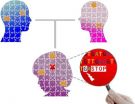(Press-News.org) A mechanism that enables the development of resistance to Acute Myeloid Leukemia (AML) anticancer drugs, thereby leading to relapse, has been identified by Kathy Borden of the University of Montreal's Institute for Research in Immunology and Cancer (IRIC) and her collaborators. Kathy Borden is a Principal Investigator at IRIC and a professor at the university's Department of Pathology and Cell Biology. The development of drug resistance is one of the main problems in clinical oncology and the cause of relapse in many patients.
The new discovery, recently published in the prestigious scientific journal Nature, constitutes a major breakthrough in the fight against AML, one of the deadliest forms of leukemia, because it immediately suggests strategies to overcome drug resistance. Furthermore, the type of drug resistance the team identified is likely implicated in other cancers and a successful new treatment regimen based on these findings could have broad applications in treating cancer.
Previous work by Professor Borden's team had indicated that the use of ribavirin, a compound that was originally developed as an antiviral drug, could result in real benefits for certain cancer patients. With support from The Leukemia & Lymphoma Society of the USA, a first clinical trial using ribavirin to treat poor-prognosis AML patients was performed under the supervision of Dr. Sarit Assouline and Dr. Wilson Miller of the Segal Cancer Center at the Jewish General Hospital in Montréal.
"This first clinical study yielded extremely promising results in most patients, including remissions, with no significant treatment-related toxicity. However, as is often the case when using a single drug, all patients eventually relapsed," recall Drs. Assouline and Miller. The multi-center study also included patients from the Hôpital Maisonneuve-Rosemont (HMR) in Montreal and the McMaster University/Hamilton Health Sciences Center in Hamilton, Ontario.
In their recent article, the researchers describe why, in most of the patients, ribavirin as well as the standard chemotherapeutic drug cytarabine (Ara-C), eventually become ineffective at killing cancer cells. "By studying drug resistant cancer cells from AML patients and head and neck tumors, we found that a gene called "GLI1" is dramatically overactive in these cells," explains Hiba Zahreddine, doctoral student in the laboratory of Kathy Borden and first author of the Nature article. "With the help of our colleagues at Pharmascience Inc. we were then able to show that this results in a specific chemical change to the drugs, that prevents their toxicity toward the cancer cells," continues Professor Borden.
Fortunately, drugs that inhibit the activity of GLI1 are currently available and the scientists showed that these drugs could switch the cancer cells back into a ribavirin-sensitive state. It is hoped that when used in combination-therapy with ribavirin (or more standard chemotherapy), these drugs will prevent the development of drug resistance in patients. The team has now received approval from Health Canada to undertake a new clinical trial to test the novel drug combination in AML patients.
As part of its research partnership with Université de Montréal, Pharmascience Inc. will continue to manufacture and provide the ribavirin necessary for this clinical trial. "If this new approach is successful, it could have very broad applications since the mode of action of ribavirin suggests that it could be effective against up to 30% of all cancers including some types of breast, prostate, colon, stomach and head and neck cancers in addition to AML," explains Morris Goodman, co-founder and Chairman of the Board of Pharmascience Inc.
INFORMATION:
Researchers
Contributors to this study are affiliated with: IRIC and Université de Montréal; The Segal Cancer Center and Lady Davis Institute of the Jewish General Hospital and McGill University, Montreal; Pharmascience Inc., Montreal; The Weill Cornell Medical College, Cornell University, New York, New York; The Hôpital Maisonneuve Rosemont, Montreal; The McMaster University/Hamilton Health Sciences Centre, Hamilton, Ontario; The University of Rochester, Rochester, New York; The University of Colorado, Denver, Colorado.
Funding
This research project was financed by grants from The National Institutes of Health (USA) and The Leukemia and Lymphoma Society (USA) and support from Pharmascience Inc. (Canada), IRICoR (Canada), the Canada Research Chairs Program as well as the National Council for Scientific Research (Lebanon) and the Cole Foundation (Canada).
Study cited
Zaheddine HA, Culjkovic-Kraljacic B, Assouline S, Gendron P, Romeo AA, Morris SJ, Cormack G, Jaquith JB, Cerchietti L, Cocolakis E, Bergeron J, Leber B, Becker MW, Pei S, Jordan CT, Miller WH, Borden KLB.
The sonic hedgehog factor Gli1 imparts drug resistance through inducible glucuronidation
Nature 28 mai 2014
Major discovery on the mechanism of drug resistance in leukemia and other cancers
Understanding and overcoming a novel type of anticancer drug resistance
2014-05-28
ELSE PRESS RELEASES FROM THIS DATE:
NASA's TRMM and Aqua satellites peer into Tropical Storm Amanda
2014-05-28
Hurricane Amanda has weakened to a tropical storm, but not before NASA's TRMM satellite took a look under its clouds at the rate of heavy rainfall it was generating. After weakening to a tropical storm, NASA's Aqua satellite identified that those strong thunderstorms were limited to the area around the center of its circulation.
The Tropical Rainfall Measuring Mission satellite known as TRMM passed over Amanda on Saturday May 24, 2014 at 2150 UTC (5:50 p.m. EDT). TRMM is a joint mission between NASA and the Japan Aerospace Exploration Agency known as JAXA.
At NASA's ...
Wild coho may seek genetic diversity in mate choice
2014-05-28
CORVALLIS, Ore. – A new study by researchers at Oregon State University suggests that wild coho salmon that choose mates with disease-resistant genes different from their own are more likely to produce greater numbers of adult offspring returning to the river some three years later.
The researchers also found that hatchery-reared coho – for some unknown reason – do not appear to have the same ability to select mates that are genetically diverse, which may, in part, explain their comparative lower reproductive success.
Results of the study have been published in this ...
Increased social network can have big payoff for nonprofits, study shows
2014-05-28
BUFFALO, N.Y. — Charitable fundraising once depended primarily upon a charity's size, efficiency and longstanding reputation. That was before Razoo, Chipin, Facebook and Twitter came to town.
In the first academic study to look at what determines charitable giving on social-media sites, researchers found that those media have created a more level playing field in the nonprofit world, one in which successful use of technology can make up for limited organizational size.
Technology and social media, it turns out, can not only raise the online profile of even small organizations, ...
How long should HCV treatment last? Study suggests answers are complex
2014-05-28
BUFFALO, N.Y. – As new treatments for hepatitis C virus (HCV) are approved, biomedical scientists are exploring their mechanisms and what they reveal about the virus. An online publication this month in Hepatology is the first to report real-time tracking of viral decay in the liver and blood in 15 patients with HCV.
Led by Andrew H. Talal, MD, University at Buffalo professor of medicine in the Division of Gastroenterology, Hepatology and Nutrition and corresponding author, the study is the first to trace in real-time how the drug telaprevir inhibits viral replication ...
Study affirms value of epigenetic test for markers of prostate cancer
2014-05-28
A multicenter team of researchers report that a commercial test designed to rule out the presence of genetic biomarkers of prostate cancer may be accurate enough to exclude the need for repeat prostate biopsies in many — if not most — men.
"Often, one biopsy is not enough to definitively rule out prostate cancer," says study researcher Jonathan Epstein, M.D., director of the Division of Surgical Pathology and a professor of pathology, urology and oncology at the Johns Hopkins University School of Medicine. "Our research finds that by looking for the presence or absence ...
Women's contraceptive use influenced by contraception education and moral attitudes
2014-05-28
COLUMBIA, Mo. – Nearly half of all pregnancies in the United States are unintended, and unplanned pregnancies are associated with poorer health and lower rates of educational and economic achievement for women and their children, according to the Centers for Disease Control and Prevention. However, research shows that the desire to avoid pregnancy does not necessarily increase women's use of contraceptives, although this discrepancy is not well understood. Now, MU researchers have found that levels of prior sex education and moral attitudes toward contraception influence ...
Toxins in the environment might make you older than your years
2014-05-28
Why are some 75-year-olds downright spry while others can barely get around? Part of the explanation, say researchers writing in the Cell Press journal Trends in Molecular Medicine on May 28, is differences from one person to the next in exposure to harmful substances in the environment, chemicals such as benzene, cigarette smoke, and even stress.
While the birth date on your driver's license can tell you your chronological age, that might mean little in terms of the biological age of your body and cells. The researchers say that what we need now is a better understanding ...
Cocktail party neuroscience: Making sense of voices in a crowd
2014-05-28
This news release is available in French. Listening to a conversation in the context of a cocktail party presents a great challenge for the auditory system. Without realizing it, one must extract, from a complex mixture of sound, the sound of a single voice to understand and track it. Researchers at Queen's University, lead by Dr. Ingrid Johnsrude, are studying how our brains meet that challenge, and allow us to distinguish specific voices in crowded, noisy and distracting environments. Her studies have revealed that the brain does not simply rely on the incoming ...
New research shows memory is a dynamic and interactive process
2014-05-28
This news release is available in French. Research presented by Morris Moscovitch, from the Rotman Research Institute at the University of Toronto, shows that memory is more dynamic and changeable than previously thought. Dr. Moscovich's results reveal that important interactions between the hippocampus and the neocortex, two regions of the brain, have different yet complementary roles in remembering places and events. These results highlight that different forms of memories exist in the brain, and that these are encoded in different, but interacting parts of the ...
Uncovering clues to the genetic cause of schizophrenia
2014-05-28
NEW YORK, NY (May 21, 2014) — The overall number and nature of mutations—rather than the presence of any single mutation—influences an individual's risk of developing schizophrenia, as well as its severity, according to a discovery by Columbia University Medical Center researchers published in the latest issue of Neuron. The findings could have important implications for the early detection and treatment of schizophrenia.
Maria Karayiorgou, MD, professor of psychiatry and Joseph Gogos, MD, PhD, professor of physiology and cellular biophysics and of neuroscience, and their ...
LAST 30 PRESS RELEASES:
Fires could emit more air pollution than previously estimated
A new way to map how cells choose their fate
Numbers in our sights affect how we perceive space
SIMJ announces global collaborative book project in commemoration of its 75th anniversary
Air pollution exposure and birth weight
Obstructive sleep apnea risk and mental health conditions among older adults
How talking slows eye movements behind the wheel
The Ceramic Society of Japan’s Oxoate Ceramics Research Association launches new international book project
Heart-brain connection: international study reveals the role of the vagus nerve in keeping the heart young
Researchers identify Rb1 as a predictive biomarker for a new therapeutic strategy in some breast cancers
Survey reveals ethical gaps slowing AI adoption in pediatric surgery
Stimulant ADHD medications work differently than thought
AI overestimates how smart people are, according to HSE economists
HSE researchers create genome-wide map of quadruplexes
Scientists boost cell "powerhouses" to burn more calories
Automatic label checking: The missing step in making reliable medical AI
Low daily alcohol intake linked to 50% heightened mouth cancer risk in India
American Meteorological Society announces Rick Spinrad as 2026 President-Elect
Biomass-based carbon capture spotlighted in newly released global climate webinar recording
Illuminating invisible nano pollutants: advanced bioimaging tracks the full journey of emerging nanoscale contaminants in living systems
How does age affect recovery from spinal cord injury?
Novel AI tool offers prognosis for patients with head and neck cancer
Fathers’ microplastic exposure tied to their children’s metabolic problems
Research validates laboratory model for studying high-grade serous ovarian cancer
SIR 2026 delivers transformative breakthroughs in minimally invasive medicine to improve patient care
Stem Cell Reports most downloaded papers of 2025 highlight the breadth and impact of stem cell research
Oxford-led study estimates NHS spends around 3% of its primary and secondary care budget on the health impacts of heat and cold in England
A researcher’s long quest leads to a smart composite breakthrough
Urban wild bees act as “microbial sensors” of city health.
New study finds where you live affects recovery after a hip fracture
[Press-News.org] Major discovery on the mechanism of drug resistance in leukemia and other cancersUnderstanding and overcoming a novel type of anticancer drug resistance



